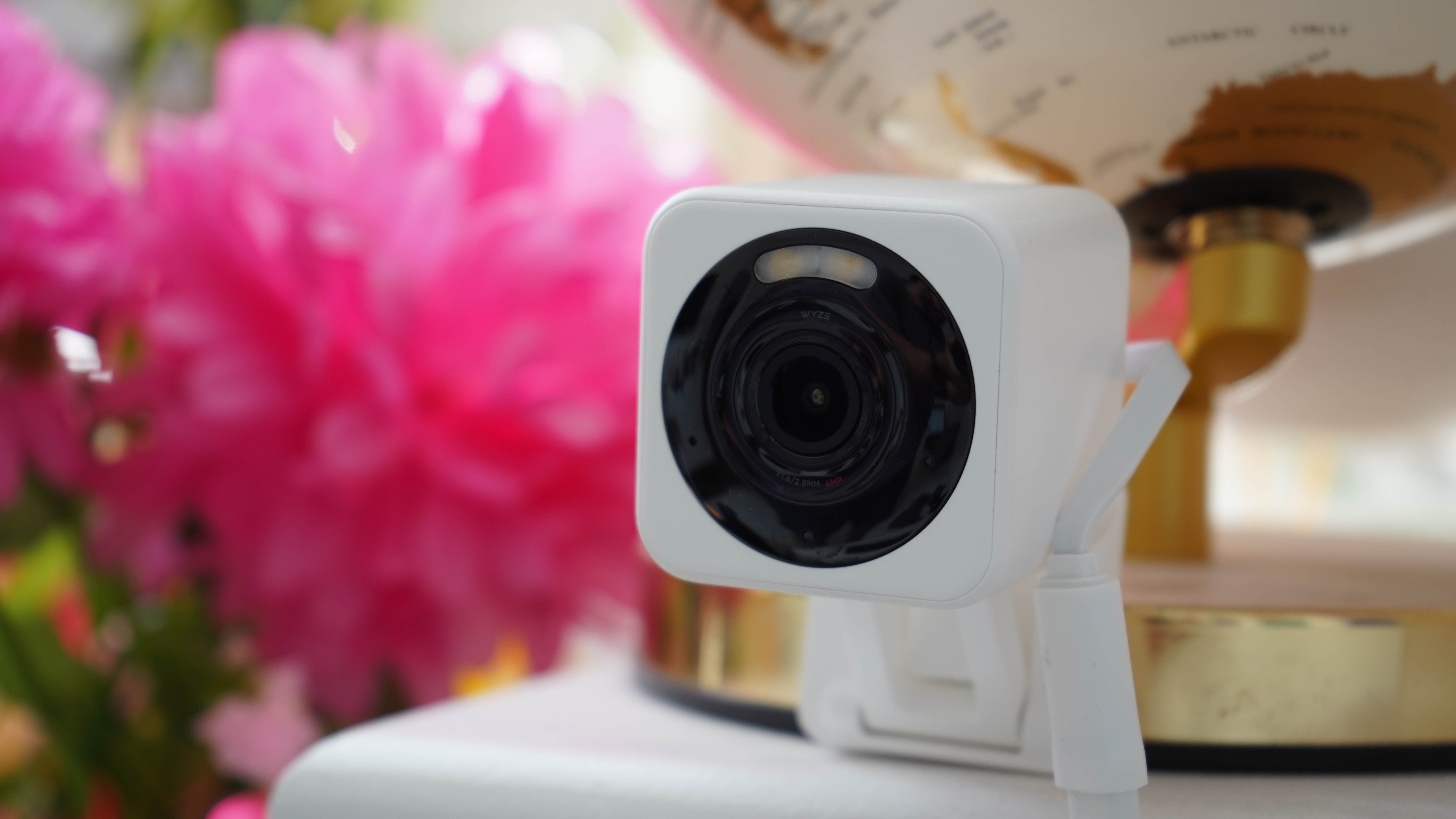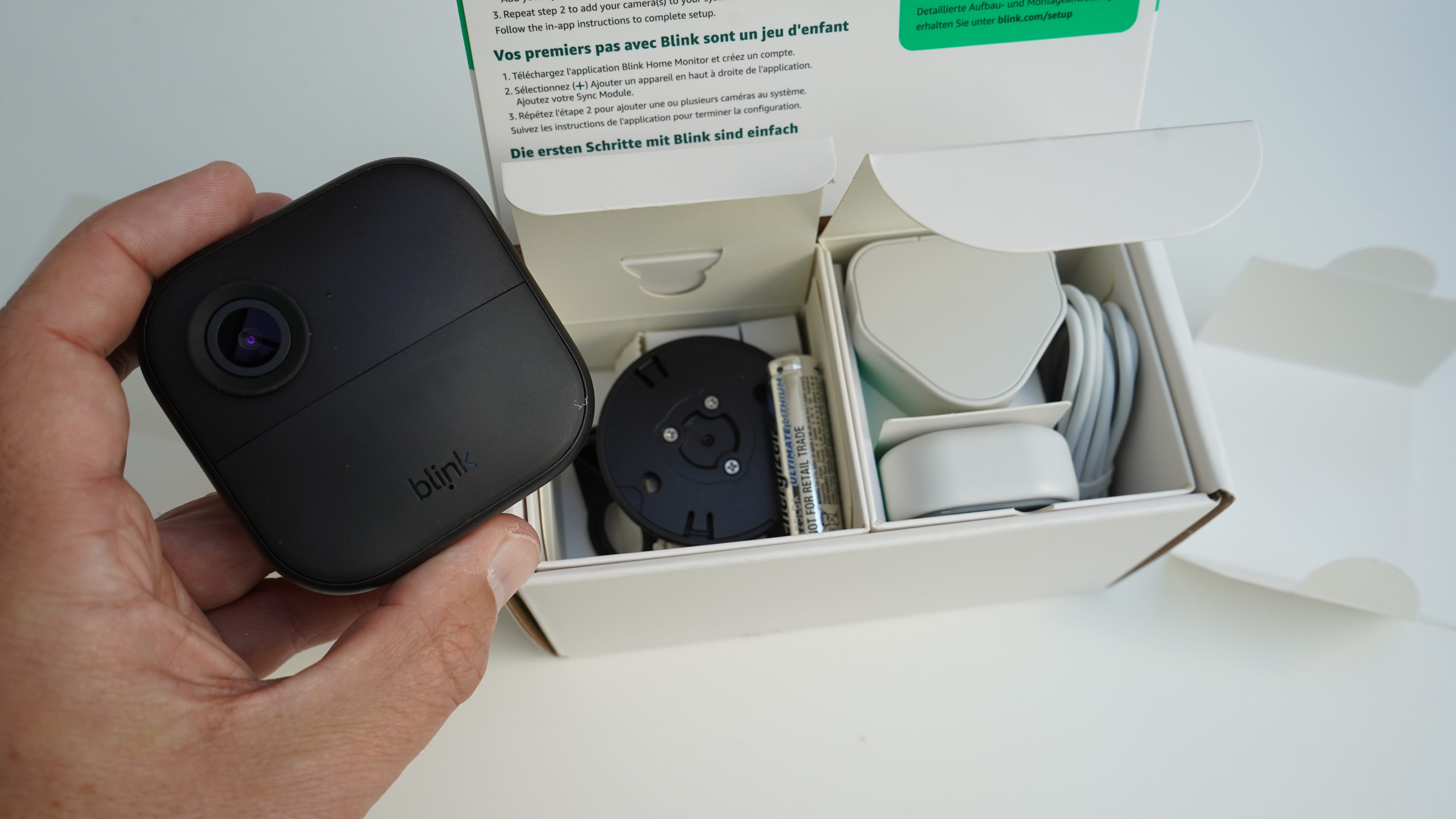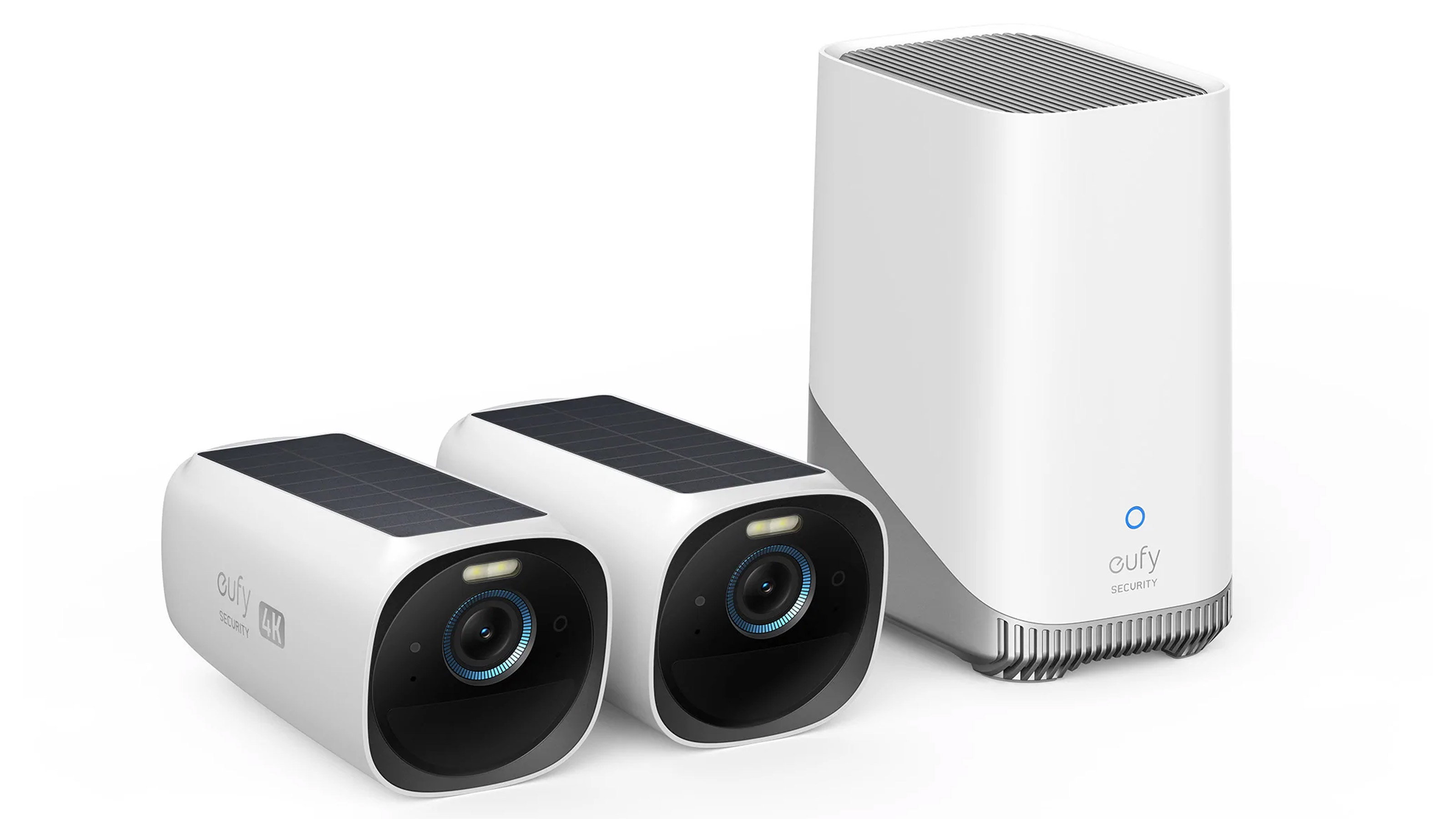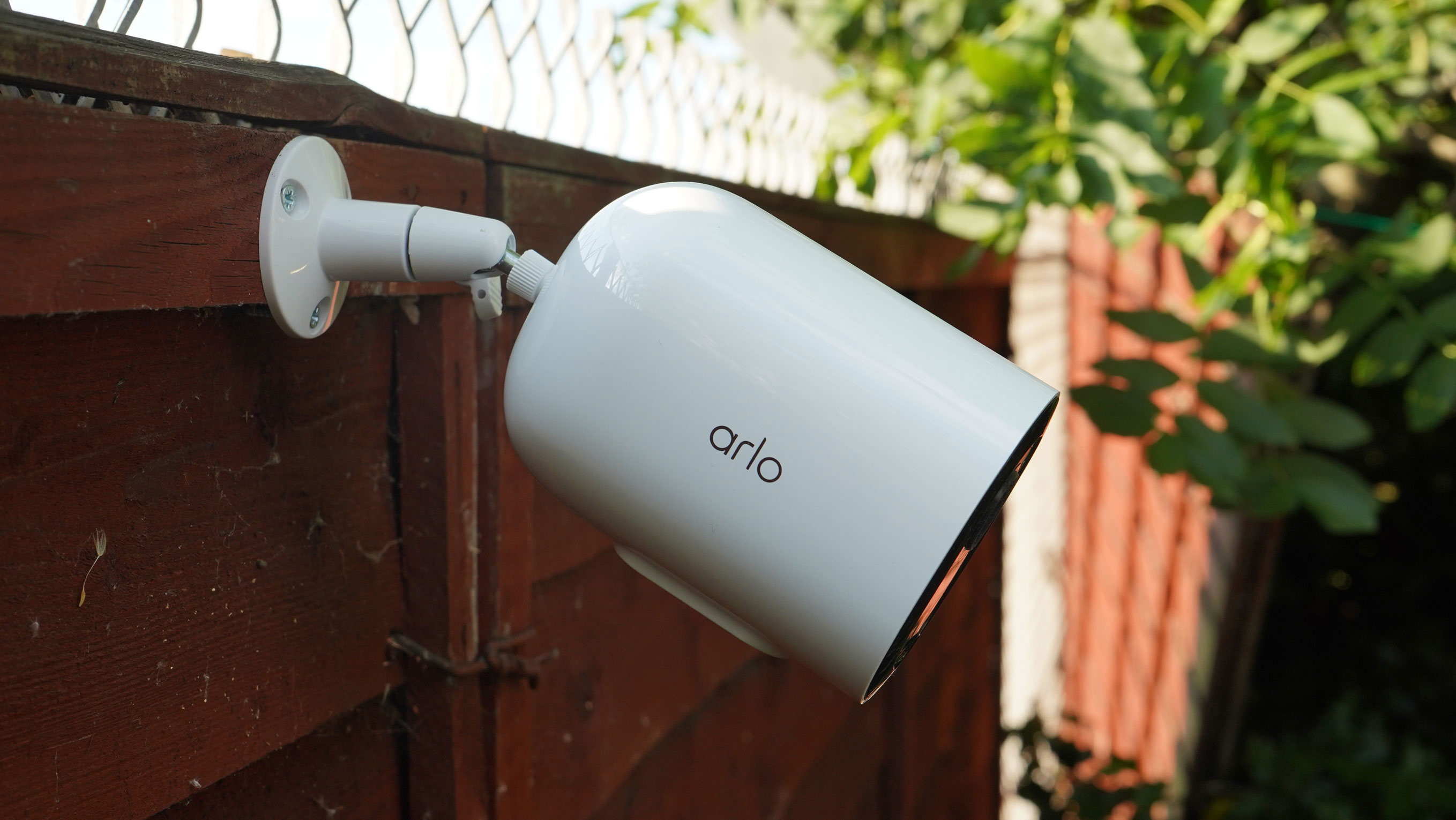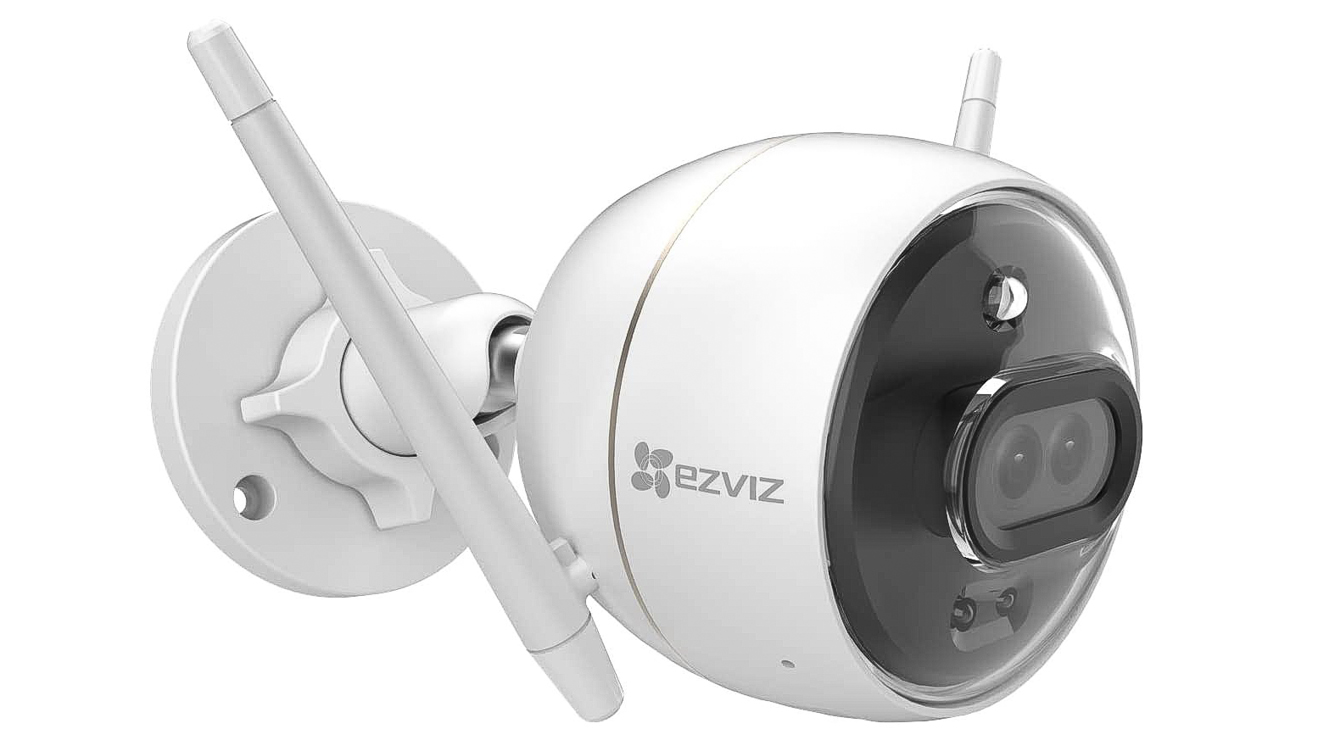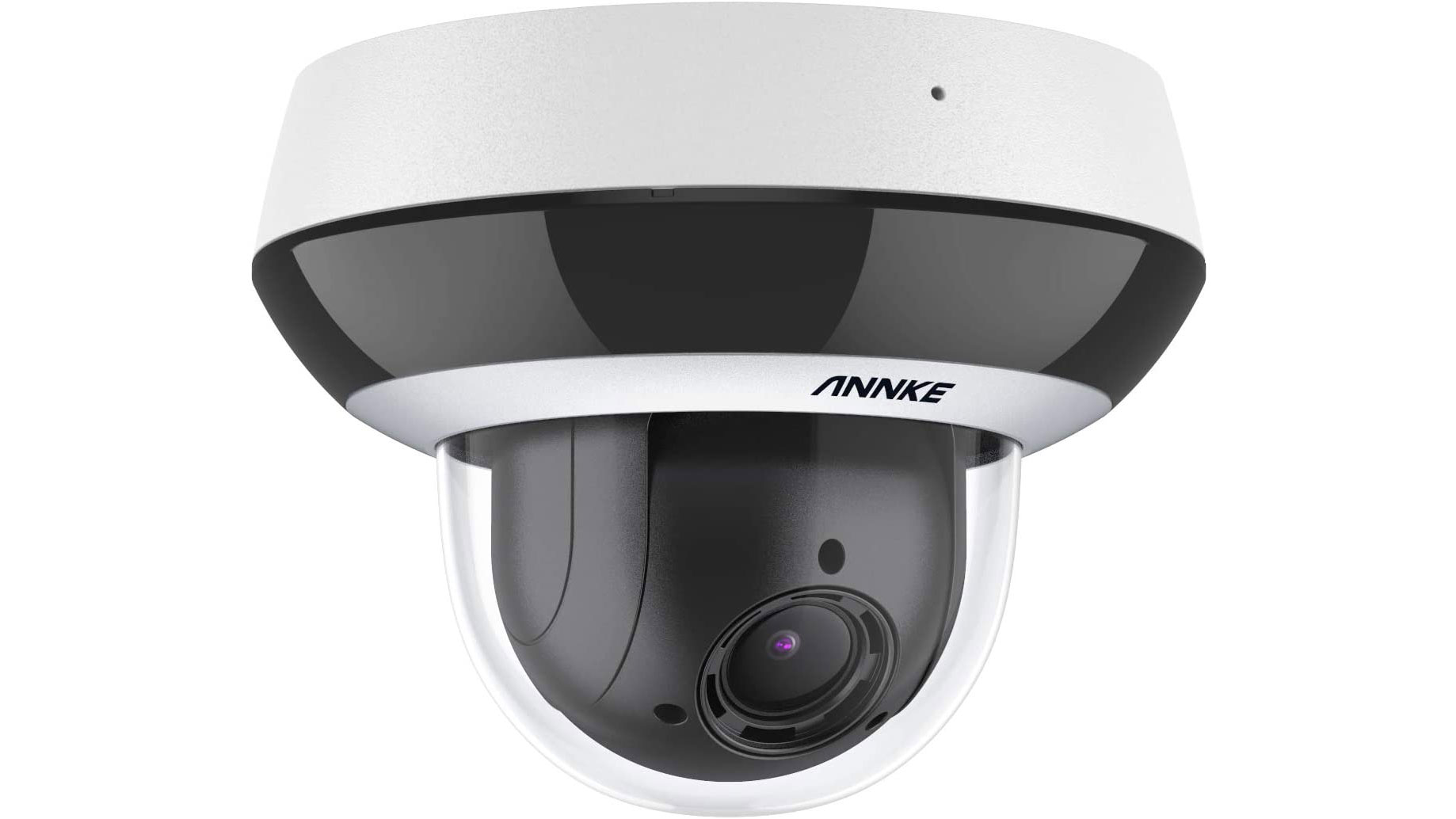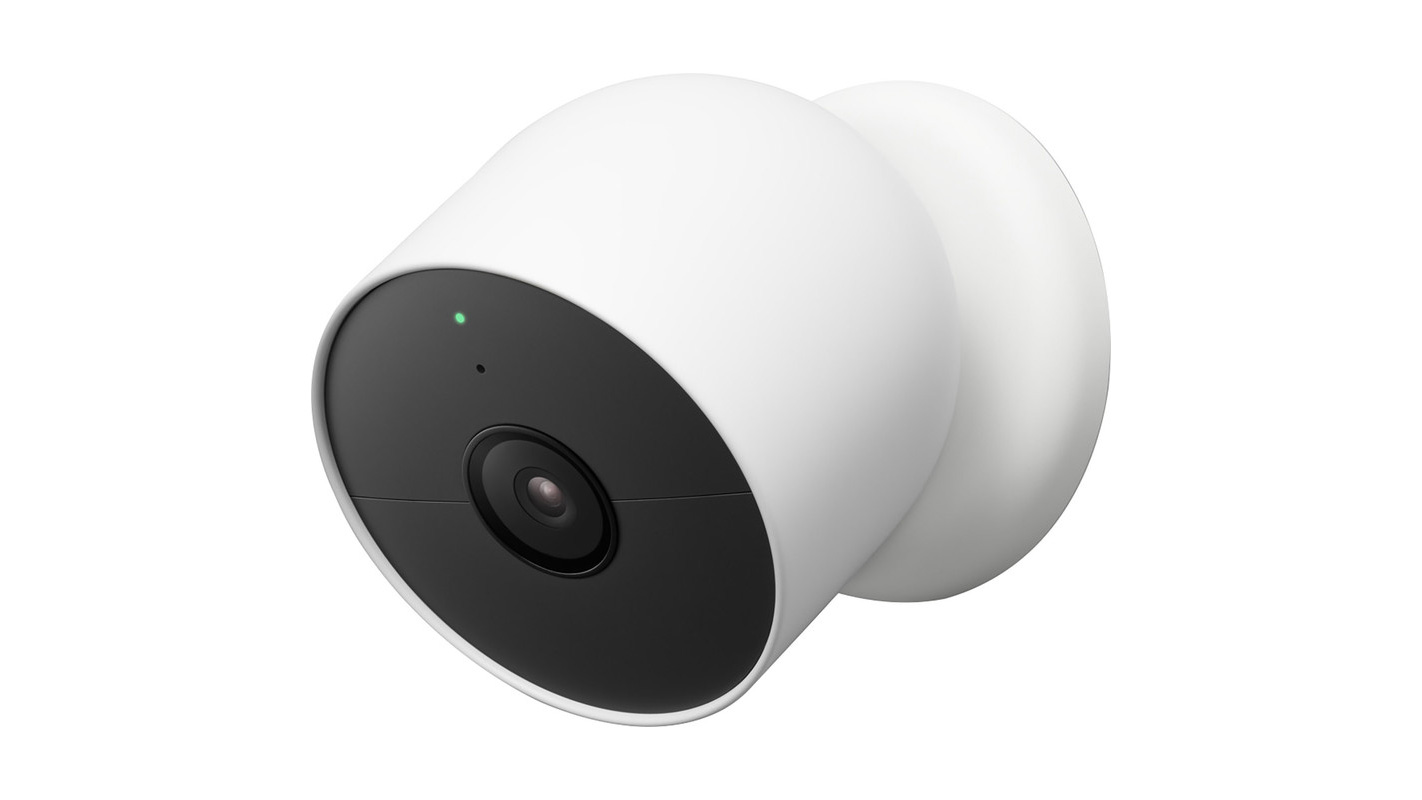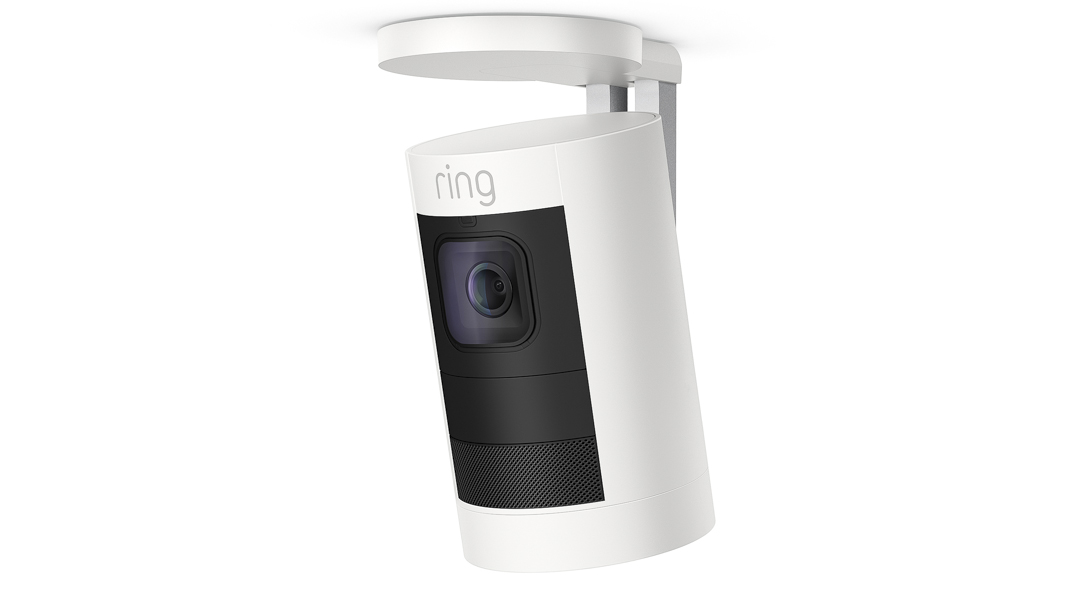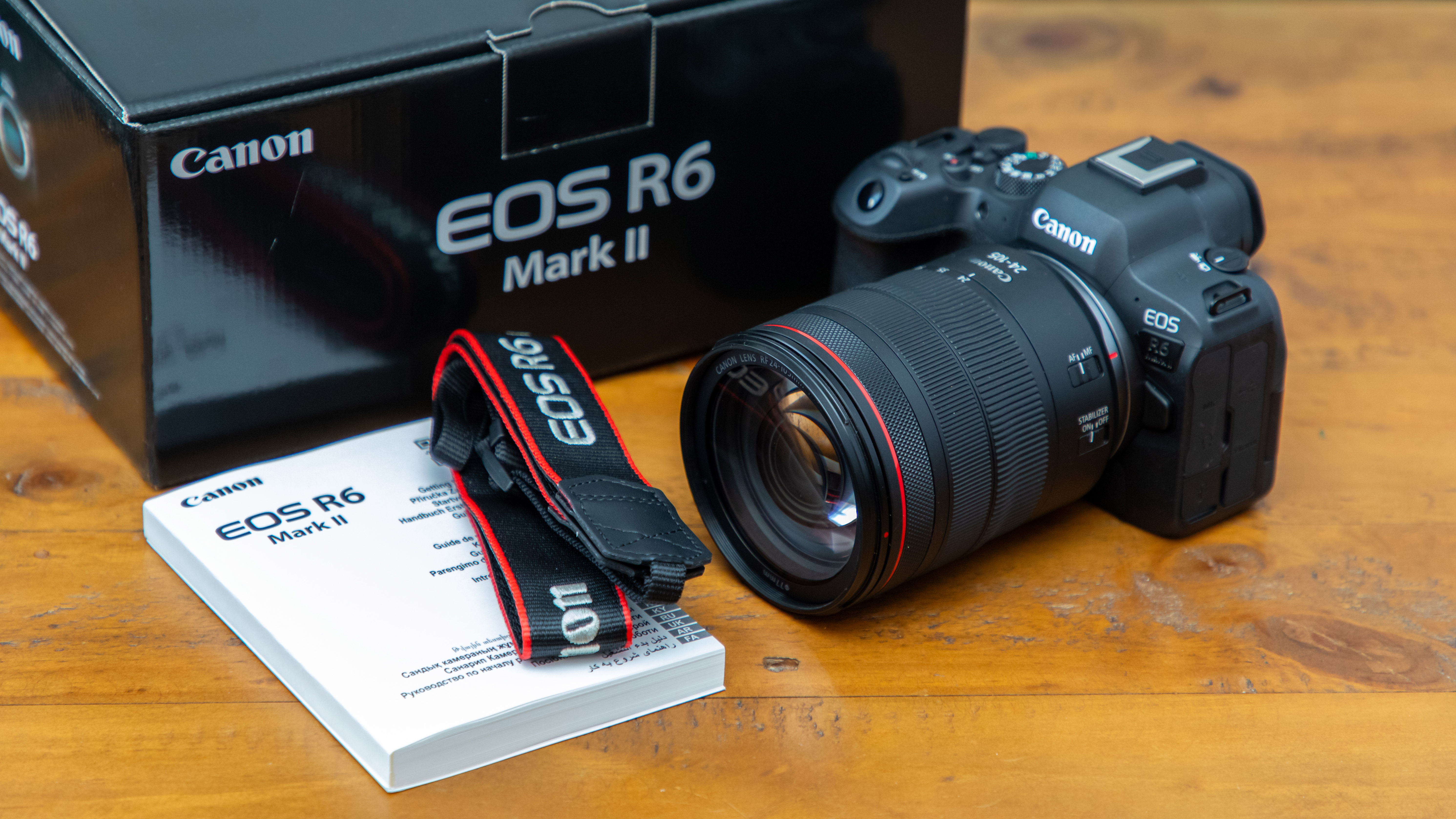The best outdoor security cameras
With the best outdoor security camera you can keep an eye on your property from your smartphone, from anywhere
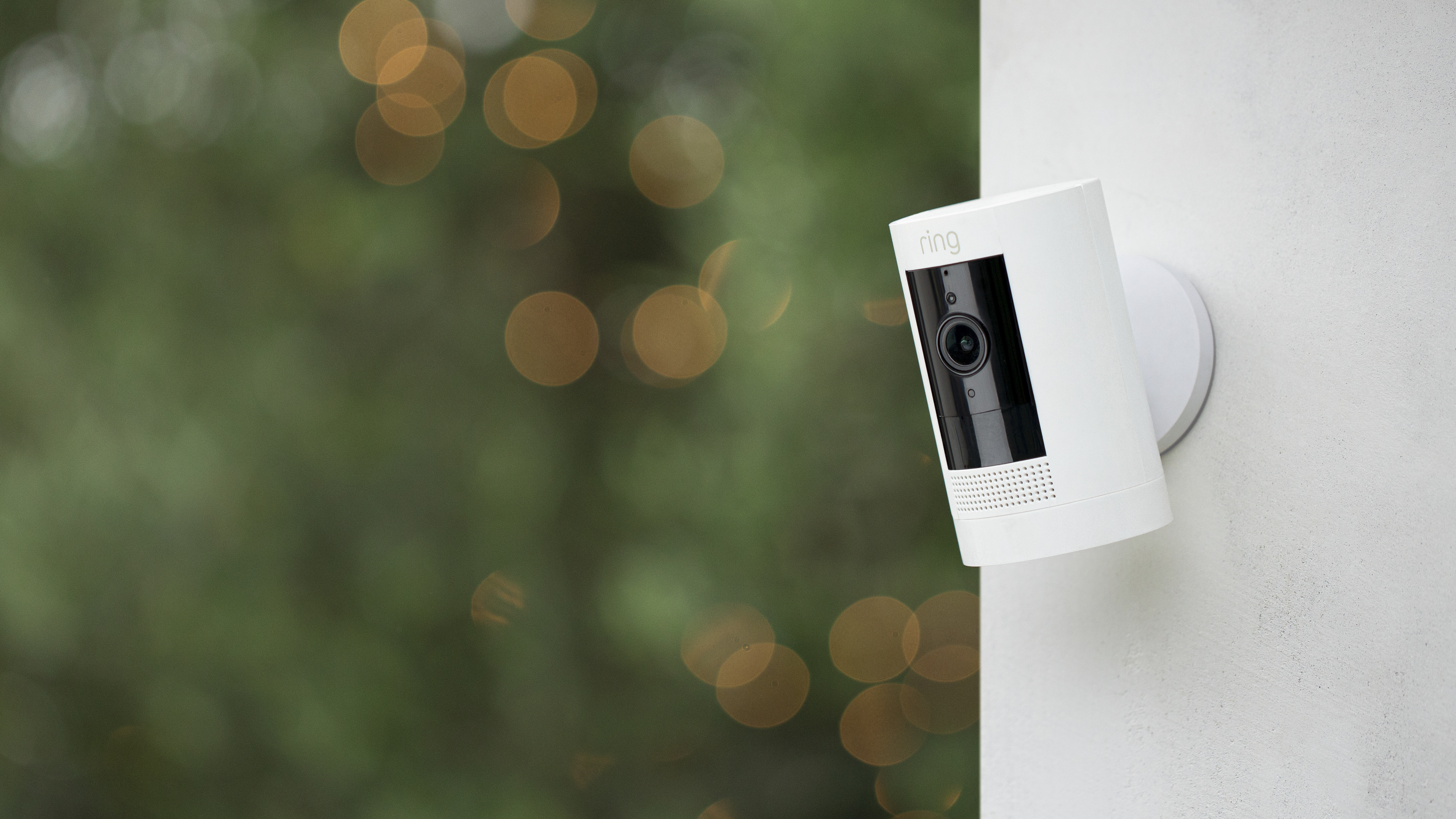
Looking for the best outdoor security camera for your home or business? This guide will take you through the top systems, and discuss the different features, so you can decide on the best outdoor security system for your budget – and buy it at the best price.
Choosing a security system used to be about all the cameras, and perhaps (if you're Gen-X and older) some kind of video recorder to capture the evidence. Things have very much changed these days.
Home security cameras are usually part of a system which involves your phone, and can alert you to what is seen, so not only do you need good quality in the camera, but you need that system to be reliable and not prone to sending you unwarranted alerts every few seconds.
Because these services can and often do rely on an internet connection or online services, there might well be a subscription component too, so the consideration of value is two-part. Firstly, of course, "Is the camera worth it?" (quality, reliability, etc.) but "Does the subscription service give me what I need?" – something which can be measured in terms of AI, storage of clips and much more besides.
The market has seen a lot of innovation from Google, Apple, and (interestingly) Amazon in terms of smart home integration, not to mention a variety of cameras as well as those destined for the outdoors. I’ve created a separate list for indoor security cameras, but don’t forget you can often mix and match to create your own complete system with eyes wherever you need them, including your smart home doorbell.
There are solutions for off-gridders in this list too, because cloud storage also depends on a reliable internet connection.

Adam has been obsessed with looking at cameras and gadgets for his whole life, and has developed a deep knowledge of special-purpose cameras, including PTZ cameras, webcams and action cams. (He's also our drone expert, and has written several bestselling books including The Drone Pilot's Handbook).
The Quick List
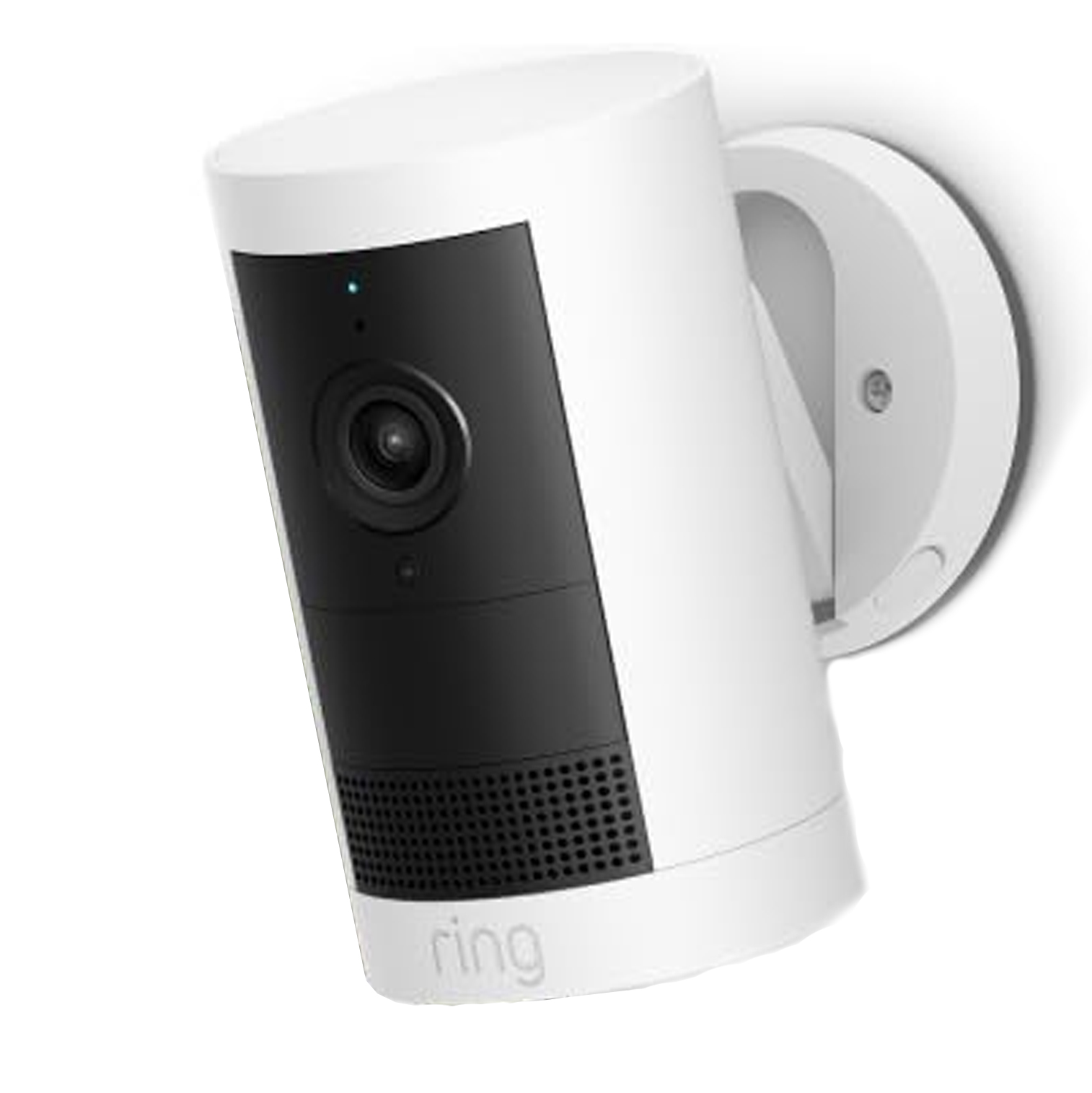
2.5K video, AI-enhanced motion detection and support for every major smart home system are just the start for this camera. Read more below…
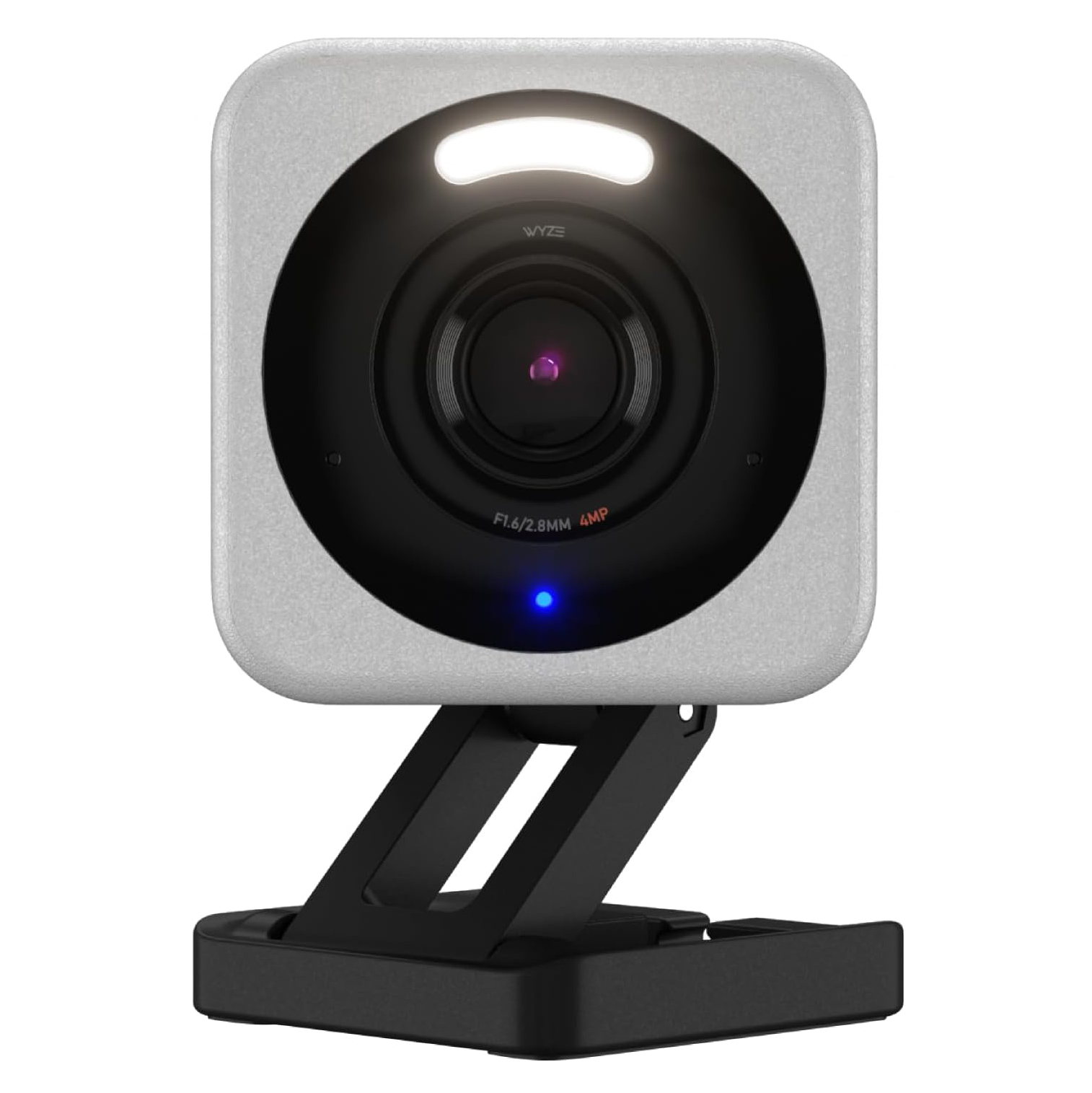
This keenly priced camera features IP65-rated weatherproofing, the ability to capture color footage in the dark, and great smart home integration. Read more below…
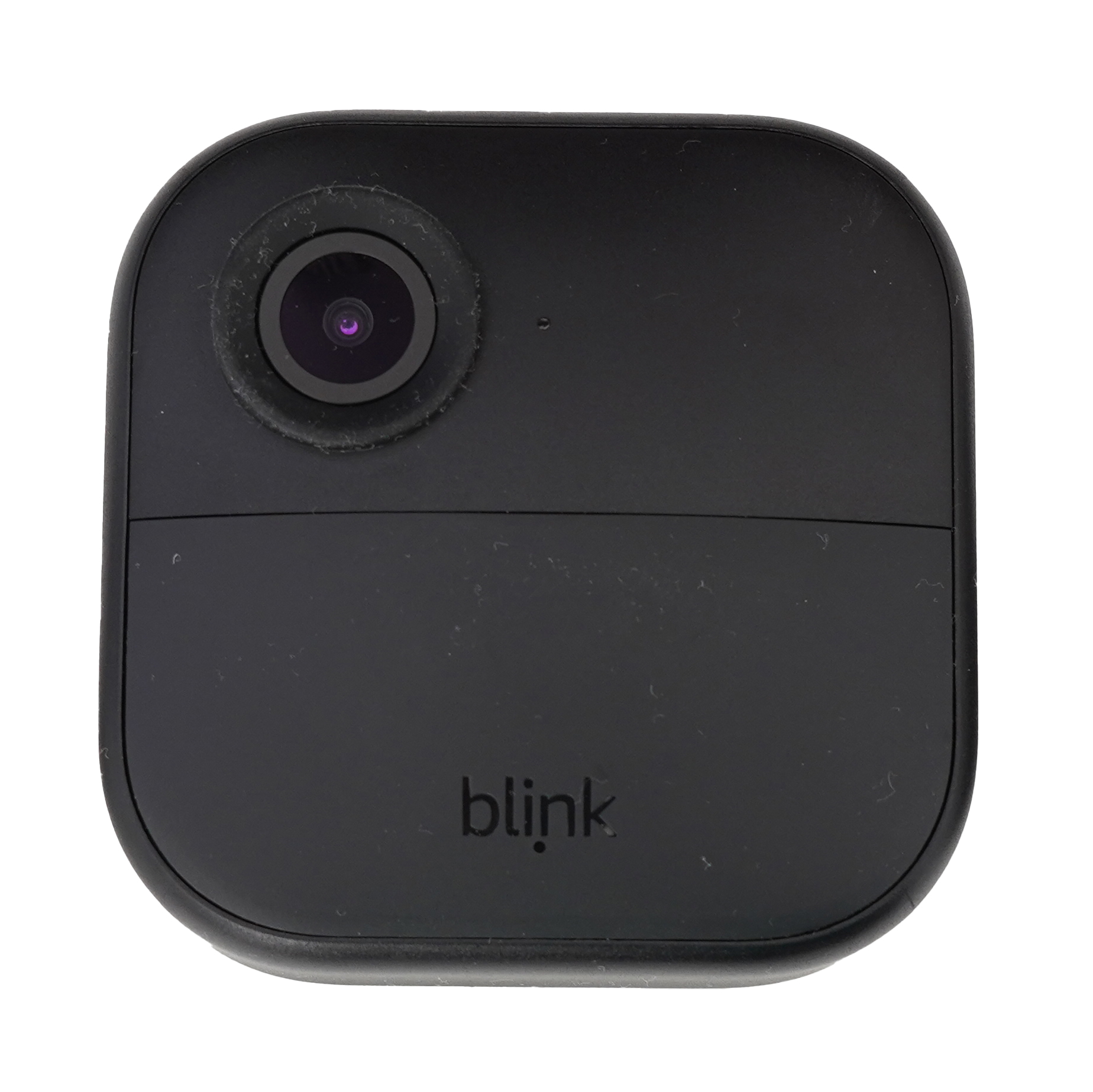
The batteries for this camera last for two or four years, enabling the Blink Outdoor to capture short clips as soon as it sees motion. Read more below…
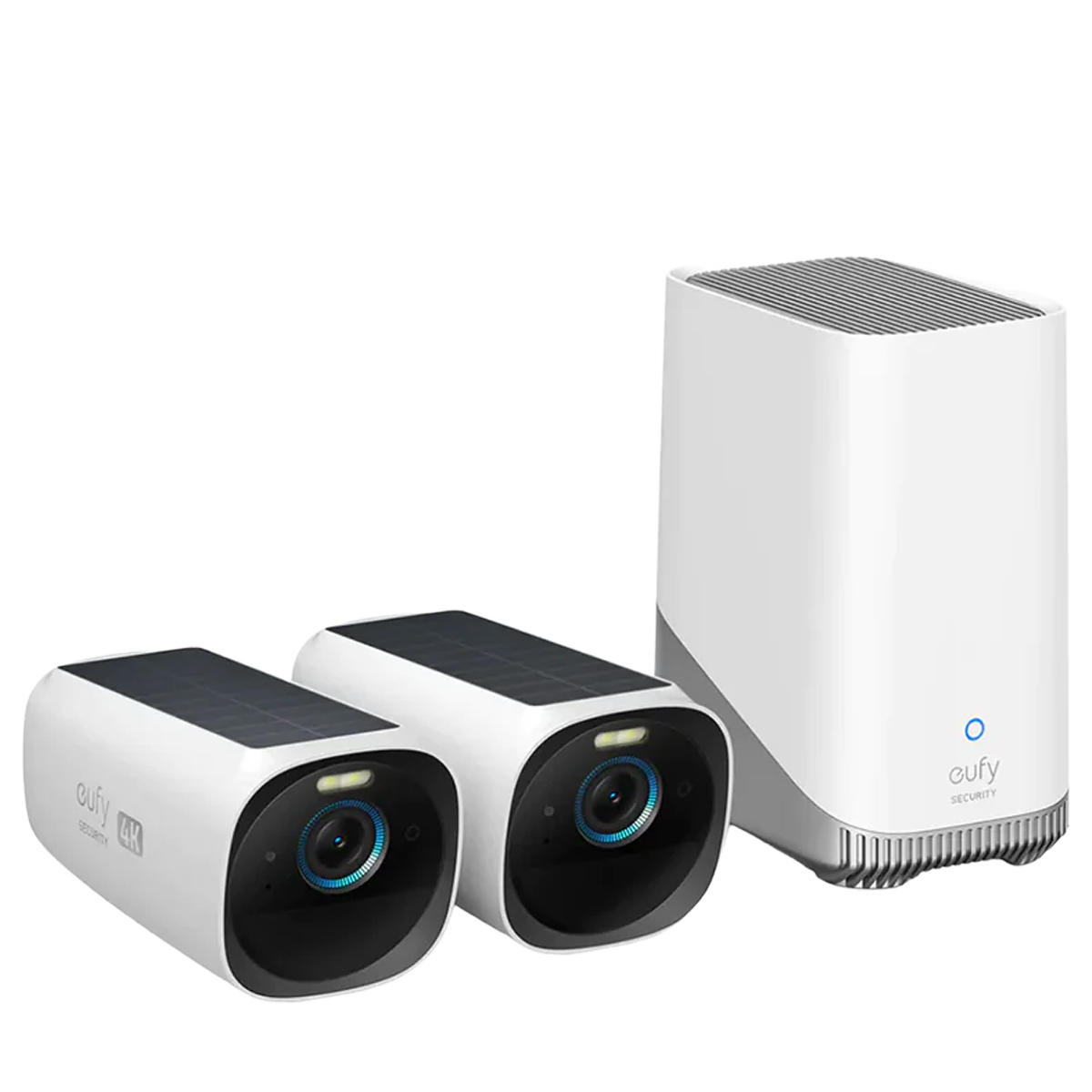
With two cameras and an in-home base station, you can store potentially terabytes of video without having to get a subscription. Read more below…
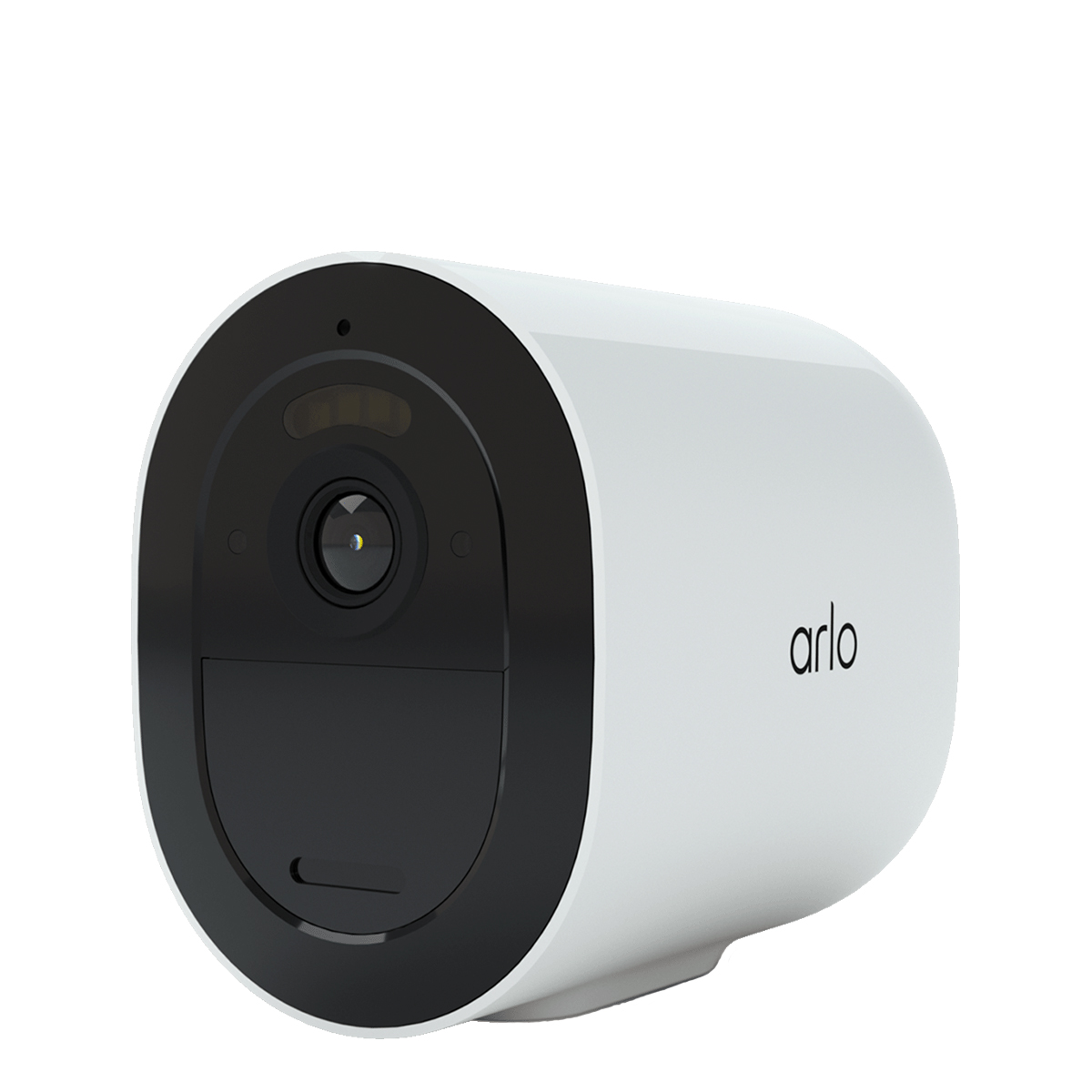
Add a data SIM card to this fully featured camera, and you can place it in the parts your home Wi-Fi network cannot reach. Read more below…
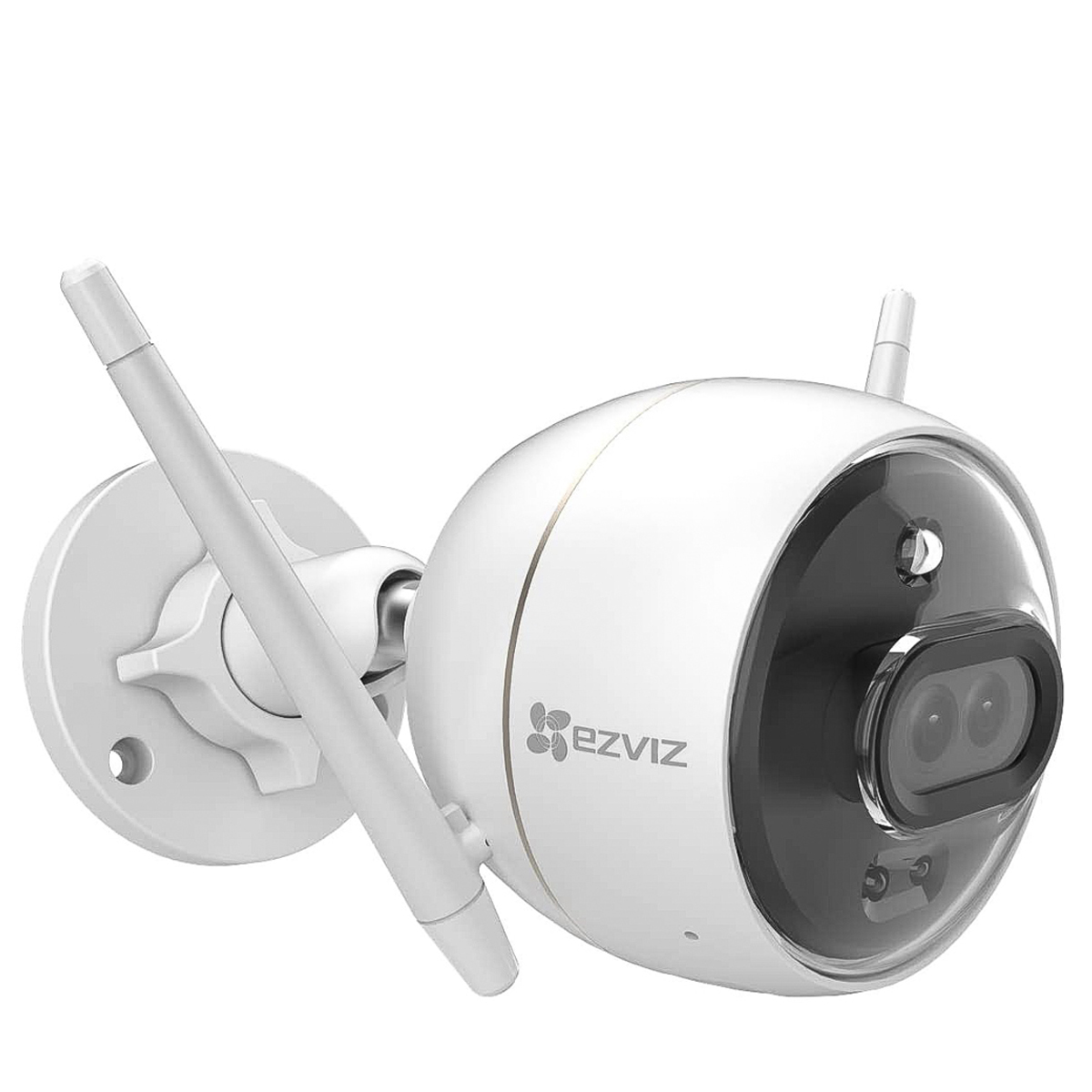
Combining regular and infrared image sensors enable this camera to record color footage at night, with AI adding a further edge. Read more below…
View the full list ⤵
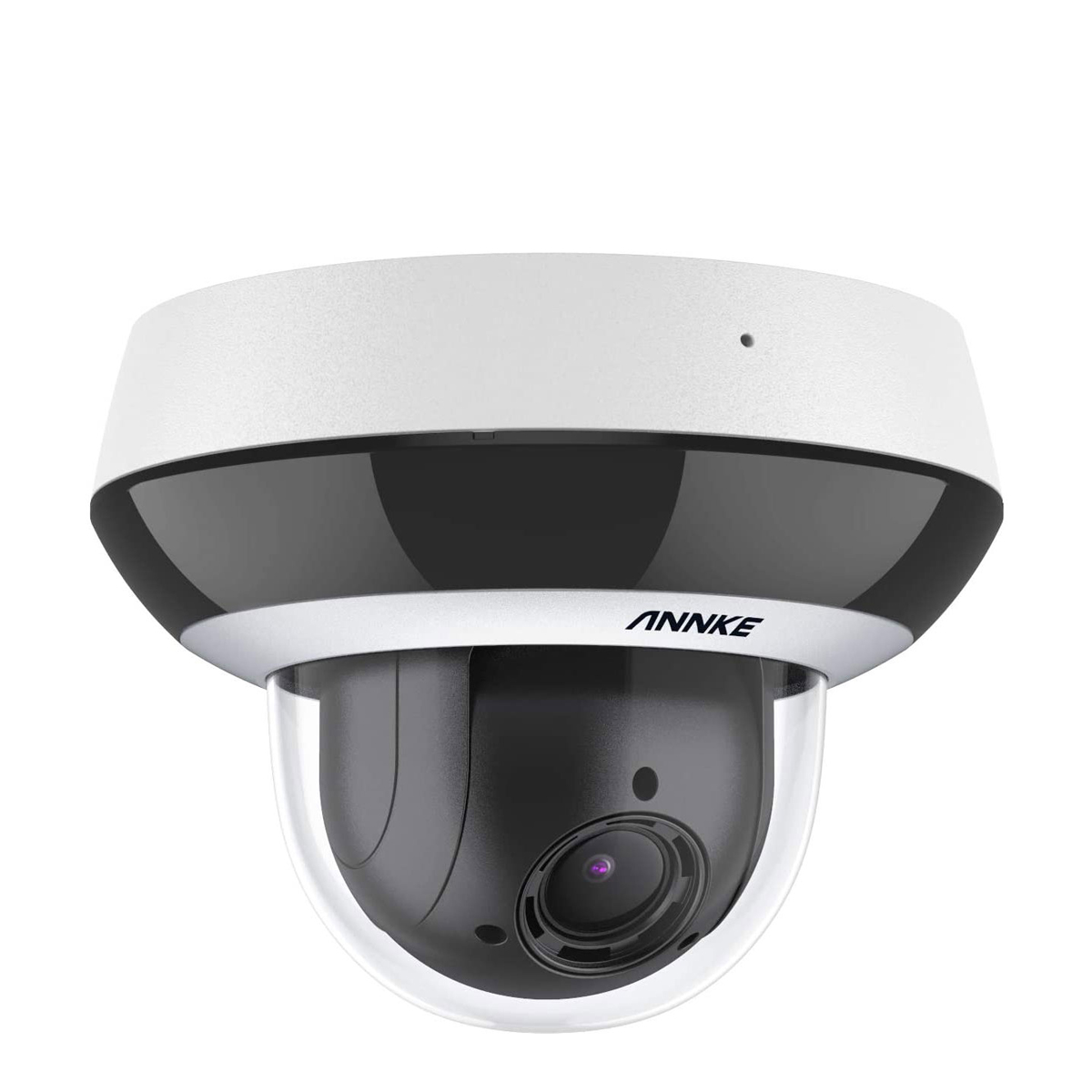
This camera can follow anything it detects around, with a mighty 25x optical zoom letting you examine a subject in telling detail. Read more below…
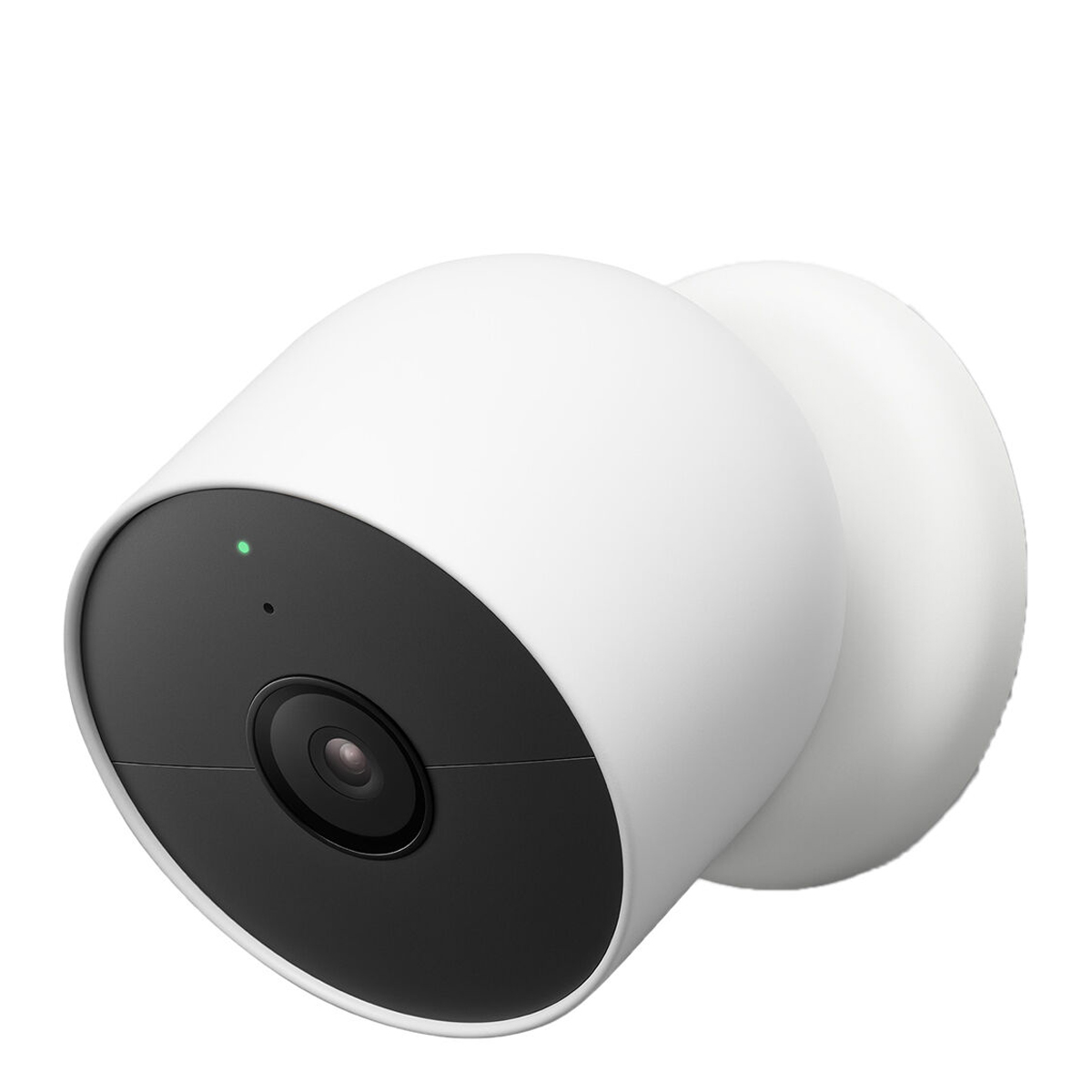
The capable app linked to this camera receives a live feed, with subscription-free recognition of different kinds of subject. Read more below…
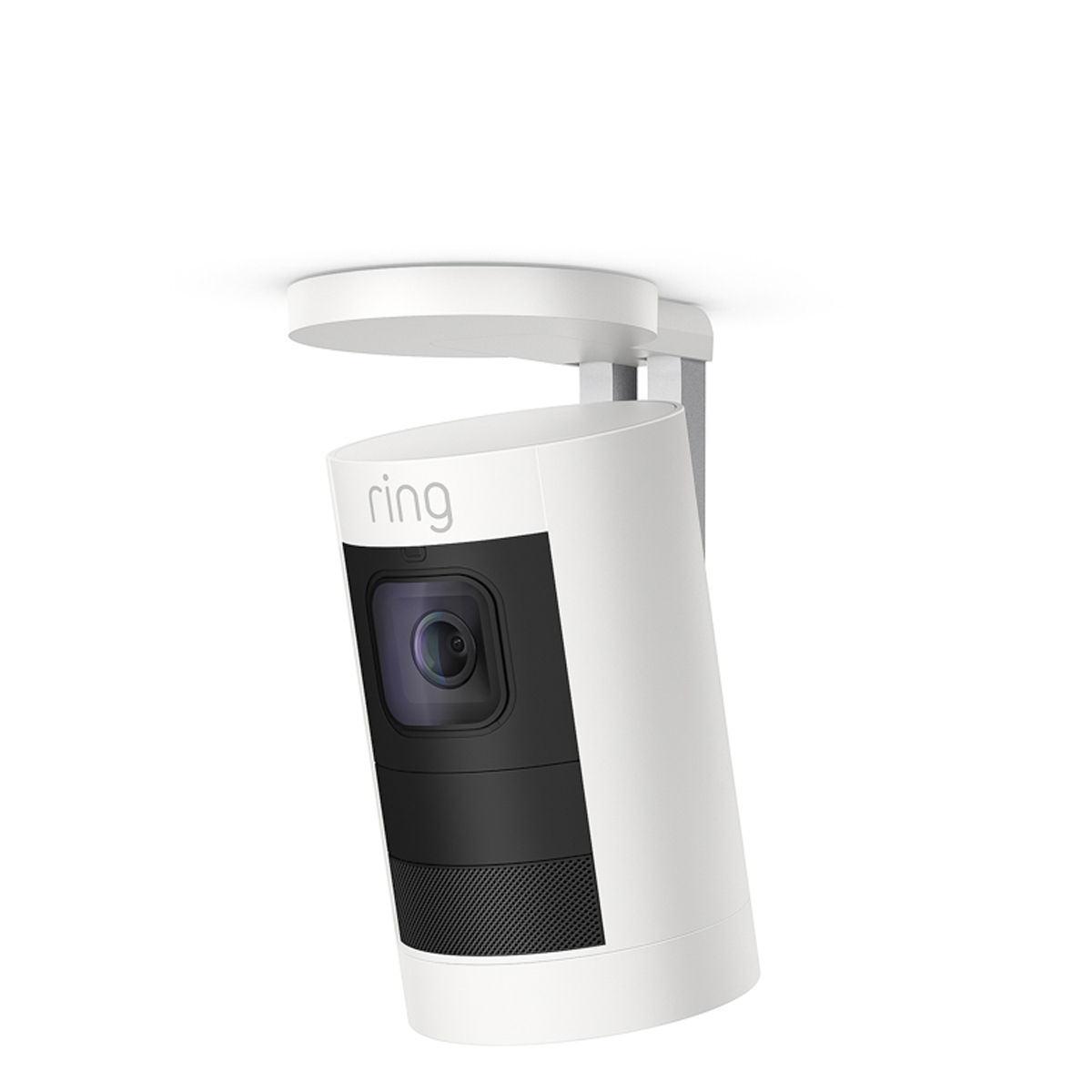
The rechargeable battery in this camera lasts for up to 1,000 incidents, but an optional solar panel can extend that figure hugely. Read more below…
Best outdoor security cameras
Why you can trust Digital Camera World
Best overall
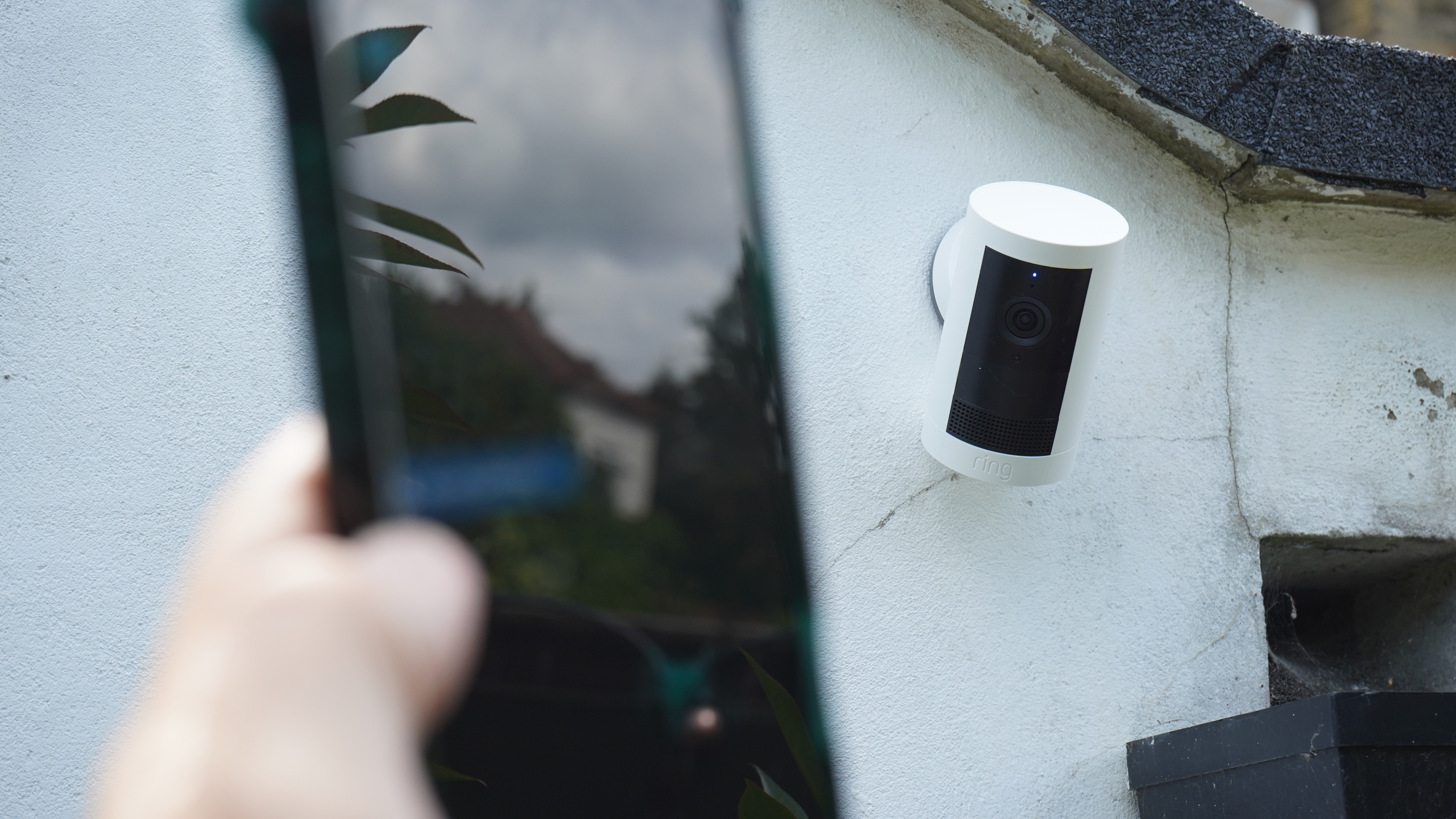
Specifications
Reasons to buy
Reasons to avoid
The Ring Outdoor Cam Plus brings a higher resolution (2K) which isn't miles ahead of the 1080P of typical cameras until recently, but makes the difference between viewing in landscape and pinch-and-zooming to view in portrait which does feel a little bit more natural these days.
The battery lasts a couple of months in a reasonably busy location like a garden, and the relatively wide field of view means that the camera can see the whole garden. Person detection means that, if you have the subscription, you don't get any unnecessary alerts, which makes the Ring system very appealing (but only for subscribers).
There are still some niggles – though outmoded in many areas outside security cameras, Ring (like others in the field) persist with MicroUSB charging cables for their batteries.
Read more: Ring Outdoor Cam Plus full review
Features | Ring has a good range of features, lacking only animal detection. Some do require the subscription though. |
Design | The cylindrical design isn't only striking (deterrent effect achieved) but makes it easier to access the battery compartment without removing the camera. |
Performance | AI people detect is so good that it was even triggered by persons in the peripheral areas of the 160-degree field of view. |
Value | Ring's isn't the cheapest system, especially if you build a complete system, but it offers extensive coverage and connects with the popular doorbell. |
Best budget outdoor camera
2. Wyze Cam v4
Specifications
Reasons to buy
Reasons to avoid
With little more than the optional outdoor power adapter (a weatherproofed Micro-USB cable), the Wyze Indoor cam makes itself ready for a trip outdoors, and as such it's very economically efficient. You can also record clips without a subscription using the built-in MicroSD card slot, which is great.
A subscription will still help, buying you cloud storage of footage and (on a premium tier) facial recognition and an alarm mode. The camera has detection zones and built-in speakers as well as a microphone so two-way talk is an option. Advanced features even include the ability to have the camera listen out for a baby crying, a fire alarm, or some audible detector.
The option not to use the subscription service is always appreciated too, especially as the price of entry is low. The camera is small, too, but in the box a metal mounting plate is included so – if your chosen mounting location isn't made of ferrous metal – you can solve that too.
Features ★★★★✩ | Smart AI, motion tracking "Smart Focus", and the ability to record onto a MicroSD card in camera if you need it. |
Design ★★★★✩ | You'll never get 5-stars for design using old-school Micro-USB, but the magnetic base and digital zoom are impressive positive steps. |
Performance ★★★★✩ | Color is good – the built in spotlight helps – and the audio is surprisingly clear too for such a compact device. |
Value ★★★★★ | This costs a lot less than most smart home security cameras, but can compete against the big names like Arlo or Ring. |
Best battery-powered budget outdoor camera
Specifications
Reasons to buy
Reasons to avoid
A lot of smart home security cameras work with batteries, but they are nearly all rechargeable and that seems to limit them to a few months of power. Blink have opted for disposable Lithium AAs which keep the camera running for 2 to 4 years and that makes installation and operation a lot easier.
The camera bridges to your wi-fi network using a Sync Module 2, which keeps the power usage down, and there are some compromises to be had (video resolution is not the highest and clips are limited to 60 seconds). This is a choice, though, and in exchange you get a camera which will be less work to maintain which matters a lot to many, especially if you choose to fit it somewhere difficult to access. I say that from experience.
The device is not only relatively sensibly priced, but the Sync Module's USB socket means there is the option for very cheap recording of clips – much more so than many other cameras which insist on a subscription for anything other than live view. Non cloud-subscribers still miss a few features, though, like thumbnails when reviewing clips and hourly photos assembled into timelapse so you can review what happened as you slept.
The Blink system’s friction installation is simple because the device is light, but you’d want to be sure to mount it out of reach for thieves (but somewhere not too hard to reach every two years!). Clearly, the default settings are designed to preserve battery life, but the app offers (and explains) choices like ‘early motion’ so you can choose your own priorities.
Read more: Blink Outdoor 4 review
Features ★★★★✩ | This camera doesn't have the most features, but it has good ones; I like the presence of a thermometer to check the temperature, while the long-life battery design is stand-out. |
Design ★★★★✩ | The flat design is subtle, and the fact the USB recording device is indoors improves data security. |
Performance ★★★★✩ | Video isn't striking, but the improved field of view over the original model is an improvement. |
Value ★★★★✩ | Pricing is appealing, especially for subsequent cameras (which don't require an additional Sync Module). |
Best outdoor camera with base station
4. Eufy eufyCam 3 (S330)
Specifications
Reasons to buy
Reasons to avoid
The eufyCam system represents a different approach to many on this list – one which side-steps the subscription by providing an in-home base station. As well as the 16GB card included, it also has space for a 2.5-inch hard drive so you can add terabytes of storage. The unit needs to live near your router, and it links to the cameras via Wi-Fi.
The new eufyCam 3 features 4K battery-powered cameras, with integrated solar panels to keep the charge topped up indefinitely. This will mean positioning to maximize time in the sun – Eufy says two hours a day should do the trick (but not every day is sunny). The 4K (3840x2160) resolution tops many.
Since you own the base and the camera, the AI can feature facial recognition on top of simply distinguishing between humans, vehicles and pets as most non-subscription cameras do. It’s still possible to access the video via an app as you need, and the base station can also befriend other Eufy cameras and doorbells.
Best cellular outdoor camera
Specifications
Reasons to buy
Reasons to avoid
The Arlo Go 2 is the firm’s second iteration in the relatively niche category of smart security camera with cellular reception, and it has made great progress over its predecessor. For a start, this version boasts Wi-Fi alongside cellular, so it can be placed somewhere on your grounds where coverage is uncertain, then safely opt for whichever is available at the least battery cost.
An IR motion sensor assists the camera’s own detection, meaning movement within 300ft (100m) will trigger the camera, while the 1080p resolution is enough to see what is happening if the high quality mode is selected (though this does come at the cost of battery life). Arlo’s built-in LED floodlight means color night vision is an option, though this can be disabled for discretion or to save battery.
As ever with Arlo, the Arlo Secure cloud service is what enables people/animal/vehicle detection so you should budget for a plan for the full feature set, but you don’t need to if those features don’t matter to you. Cellular coverage, on the other hand, will require a SIM, and there is no escaping that cost.
Read more: Arlo Go 2 review
Best outdoor camera for night vision
6. Ezviz C3X Dark Fighter
Specifications
Reasons to buy
Reasons to avoid
The C3X uses a dual-lens set up to offer color video at night, without supplemental lights. In addition, building AI into the system means the camera can spot human and vehicle shapes even in difficult lighting. The system works by combining data from the infrared camera (lit using two invisible-to-human-eyes lights) with the ambient brightness. The resulting H.265 video is either sent on via Wi-Fi or Ethernet, or recorded locally.
The system still has a bright strobe (and siren) which it can use to deter intruders; people, vehicles, or both, and in what region is up to you. The MicroSD and reset button are tucked under a screw-sealed plate, which should make it harder to interfere with, as well as earn the IP67 rating. It’s handy that a cable waterproofing clip is included too. The design is also kind to those installing a long way from Wi-Fi bases: the dual antenna are effective.
Best PTZ outdoor camera
7. Annke CZ500 Ultra
Specifications
Reasons to buy
Reasons to avoid
A PTZ camera (pan, tilt and zoom) can act like a sentry, looking around and examining anything suspicious more closely. The huge 25x optical zoom means you can see a lot further and check anything suspicious, which in the CZ500’s case is bolstered by AI. The camera can separate humans from animals and other objects, as well as be set up for line-crossing, intrusion, unattended baggage, and object removal. It is also listening out for unusual sounds, all of which can reduce false alarms by up to 90% while giving a lot of choice in what does cause alerts.
The sensor works right down to 0.005 lux in color with night vision extending to 50m (164ft), and the camera has EIS to maintain image stablity when moved. The CZ500 is designed to be connected via PoE (Power over Ethernet) cables, but it does offer the option of local storage (to a Micro SD) as well as to an NVR, though the robust metal vandal-proof housing (rated IP67 and IK10) means changing it is somewhat fiddly.
Best outdoor camera for simplicity
8. Google Nest Cam Battery
Specifications
Reasons to buy
Reasons to avoid
In terms of simplicity, the “Nest Cam (outdoor or indoor, battery)” – yes, that’s its full name – is fantastic. Once charged, it can be mounted magnetically to your home and sends a live view to the Google Home (not Nest) app. The newer Google app allows monitoring of multiple live cameras, among other features. Smart features like person, animal, package or vehicle recognition all take place on board the device, so you can choose which you’re notified about – and you don’t have to pay for a subscription for this. It also speeds things up compared with those services which rely on footage being sent to and processed on cloud servers.
Why’s the video ‘only’ 1080p? Because good HDR 1080p can be more useful than bad 4K (and uses far less battery to send via Wi-Fi); this is excellent quality within the limits of 1080p. There are some quirks to the design, like only being IP54 weatherproof (keep it under the eves) and the weird way the power cable looks plugged in. That said, the system seems designed to be used in battery mode. There is built-in storage to cope with internet outages, while features like two-way voice (typical of app-controlled cameras) are there.
Best outdoor camera for usability
Specifications
Reasons to buy
Reasons to avoid
The Ring Stick-Up camera – now on its third generation – is a great move for the popular Ring smart doorbell brand. If you’d like a broader view of your property, all coordinated in a mature app, look no further. The stick-up cam uses a rechargeable battery which will last about 1,000 activations (potentially as low as two months, or up to 12). The rear has a rubber-covered barrel socket for an optional solar panel which – given the right conditions – will keep it topped up longer.
To avoid the six hours of downtime while charging, you could also buy a spare battery. The Ring Battery Pack is the same across many Ring products.
The camera is also flexible when it comes to installation: the foot – initially attached to the base – can be placed anywhere, or it can be re-positioned to act as a wall mount. The battery is easily accessed by a twist-off base, but a screw can make it tamper-proof.
The cloud service is pricey, but the camera is good and the software is feature-rich, with nice touches like Snapshot capture for swipe-back timelapse review.
Read more: Ring Stick-up Battery Cam review
Fake security cameras?
Some people ask if it's a good idea to use fake security cameras to act as a deterrent. My answer is simple: In the past they made more sense than they do today because the costs associated with real security cameras are lower. That's not just the price of the camera, but of course the ongoing storage of video and the effort of swapping and rewinding tapes (yes, that's what people had to do in the old days!)
These days it makes more sense to just stop paying the cloud storage subscription or stop refreshing the battery for a real camera if you can't be bothered with it – there is always the option to start using it again. If, however, you're interested in a dummy camera there are options out there. They are sold in cheap bundles. Here are some choices:
How to choose the best outdoor security camera
Top tips for picking the best outdoor security camera system:
Ecosystem Does the camera use wi-fi or its own base station, and if the later do you have to pay extra for the base station? Are you willing to? Is the ecosystem wide enough for all your needs? Smart doorbells, for example, have quite a crossover with outdoor cameras.
Subscription Is there a subscription (or multiple subscription options), and do they charge per camera or per home? Are you willing to pay?
Local recording? Is there the option to record locally, and is it in the camera or a base station? If you’re recording into the camera, can you be confident the recording is secure?
Power supply Many outdoor cameras are battery powered, which makes for an easier install but more maintenance. Some offer solar panel accessories, like the Blink Outdoor Solar Mount, to save on battery swapping, charging or replacement.
Lighting Floodlighting, or more subtle options like bright LEDs on the Google Nest IQ or Ring Spotlight Cam can both offer color when you’re seeing in the dark and surprise trespassers.
Sirens Can deter those you don’t want on your property. High decibel counts can be most effective, but may be more than your neighbors need!
Two-way-talk Can let you check in with the kids in the garden, or let you talk to a trespasser.
Camera quality Resolution is important, but certainly isn’t the only factor; outdoor cameras are often used mainly at night, so low-light imagery matters and that depends as much on infrared lighting as pixel count. It's also sometimes true that you need to dial down image resolution to save on bandwidth usage and battery consumption.
Live View Live view refers to the live video you can see from the camera on your app. It’s also worth looking for latency – the delay between real life and what you see on your phone.
Event The cameras have sensors of one kind or another to detect humans, animals or vehicles before activating the camera, alert, lights or siren, and each occasion is referred to as an ‘event’ in the jargon. Some cameras or subscriptions only record video in clips after an event, while others offer 24/7 options.
Connection loss If your outdoor camera uses wi-fi you need to factor in the quality of the connection available at your install site. Wireless signals and brick walls aren’t friends. On-board storage like a MicroSD can provide a backup.
DFG Drop Free Glass is a technology based on electrowetting-on-dielectric microfluids; in layman’s terms, energy can be passed through parts of the glass to guide water droplets away more quickly (and using less power) than a wiper (so the lens is free of water drops).
Person detection Not the same thing as individual recognition, at best you’ll receive notifications in genres like ‘Person,’ ‘Animal’ and ‘Vehicle.’ Whether you want an alert when there is an animal in your garden depends on how much your rose bushes matter to you, for example.
How we test security cameras
As a team of experts with photographic experience and tech experience, we are not short of knowledge, and we make sure we test products in a real life environment – in the case of security cameras that often means attached to our own homes for many weeks.
Adam Juniper, one of our in-house experts, literally wrote the book on smart home tech back in the early days of the so-called "Internet of Things" (The Smart Smart Home Handbook, published by Hachette).
The best camera deals, reviews, product advice, and unmissable photography news, direct to your inbox!

With over 20 years of expertise as a tech journalist, Adam brings a wealth of knowledge across a vast number of product categories, including timelapse cameras, home security cameras, NVR cameras, photography books, webcams, 3D printers and 3D scanners, borescopes, radar detectors… and, above all, drones.
Adam is our resident expert on all aspects of camera drones and drone photography, from buying guides on the best choices for aerial photographers of all ability levels to the latest rules and regulations on piloting drones.
He is the author of a number of books including The Complete Guide to Drones, The Smart Smart Home Handbook, 101 Tips for DSLR Video and The Drone Pilot's Handbook.
